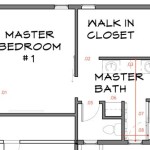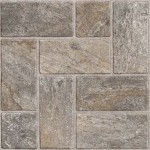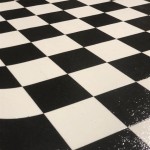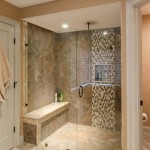Engineered Wood Flooring with a 4mm Wear Layer: A Comprehensive Overview
Engineered wood flooring has become a popular alternative to solid hardwood, offering a balance of aesthetics, durability, and cost-effectiveness. A critical component of engineered wood flooring is the wear layer, the top surface of real wood veneer that determines the floor's resistance to wear and tear. Among the various wear layer thicknesses available, a 4mm wear layer represents a significant investment in long-term performance and value. This article provides a detailed exploration of engineered wood flooring with a 4mm wear layer, covering its benefits, considerations, and suitability for different applications.
Engineered wood flooring is constructed from multiple layers, typically with a core of plywood or high-density fiberboard (HDF) topped with a layer of real wood veneer. This construction provides stability and allows for a wider range of installation options compared to solid hardwood, which is more susceptible to expansion and contraction due to moisture fluctuations. The wear layer, also known as the lamella, is the visible surface and the part of the floor that directly interacts with foot traffic, furniture, and other sources of abrasion. The thickness of the wear layer directly correlates with the floor's ability to withstand these stresses and maintain its appearance over time.
Wear layers are typically measured in millimeters (mm). Common thicknesses range from 0.6mm to 6mm or more. A thinner wear layer, such as 0.6mm or 2mm, is often found in more budget-friendly options. These floors may be suitable for low-traffic areas or temporary installations. However, for residential spaces with moderate to high foot traffic and for commercial applications, a thicker wear layer is generally recommended. A 4mm wear layer represents a substantial upgrade in durability and longevity compared to thinner options.
Durability and Longevity
The primary advantage of a 4mm wear layer is its enhanced durability. This thickness allows for multiple refinishing opportunities throughout the floor's lifespan. When the surface becomes scratched, dented, or worn, it can be sanded down and recoated with a new finish, restoring its original appearance. Thinner wear layers may only allow for one or two refinishing cycles, or none at all, significantly limiting the floor's lifespan. The ability to refinish a 4mm wear layer contributes significantly to the floor's long-term value proposition. It essentially extends the usable life of the flooring, making it a more sustainable and cost-effective choice over time.
The thicker wear layer also provides greater resistance to everyday wear and tear. Scratches and dents are less likely to penetrate through the entire wear layer and into the core, preserving the floor's aesthetic appeal. This is particularly important in homes with children, pets, or frequent guests. A 4mm wear layer provides a greater buffer against the inevitable accidents and mishaps that occur in a busy household or a commercial environment.
Furthermore, a 4mm wear layer is better equipped to handle variations in humidity and temperature. While engineered wood flooring is generally more stable than solid hardwood, extreme fluctuations can still cause some movement. A thicker wear layer is less likely to reveal any underlying issues or develop surface cracks as a result of these changes.
Aesthetic Value and Real Wood Appeal
Beyond durability, a 4mm wear layer offers a more authentic and premium aesthetic compared to floors with thinner veneers. The thicker wood veneer allows for more intricate and detailed surface treatments, such as hand-scraping, wire-brushing, or distressing. These techniques enhance the natural grain patterns and textures of the wood, creating a more visually appealing and sophisticated look. The depth of the wood provides a richer, more substantial feel underfoot, mimicking the experience of walking on solid hardwood.
The increased thickness also enables the use of wider planks, which are currently a popular design trend. Wider planks showcase more of the wood's natural character and create a sense of spaciousness in a room. Thinner wear layers are often limited to narrower planks due to structural constraints. The 4mm wear layer allows manufacturers to offer a wider range of plank widths and lengths, providing more design flexibility for homeowners and designers.
The quality of the wood species used in the wear layer also plays a crucial role in the overall aesthetic. Popular choices include oak, maple, hickory, and walnut, each with its unique grain patterns and color variations. The thicker wear layer allows for a more pronounced display of these characteristics, enhancing the natural beauty of the wood. This contributes to a more luxurious and high-end feel in the space.
Installation and Maintenance Considerations
While engineered wood flooring is generally easier to install than solid hardwood, proper installation is still essential for ensuring its longevity and performance. The 4mm wear layer does not significantly alter the installation process compared to other engineered wood options. It can typically be installed as a floating floor, glued down, or nailed down, depending on the subfloor and the manufacturer's recommendations. A level and properly prepared subfloor is crucial for a successful installation, regardless of the wear layer thickness.
Maintenance of engineered wood flooring with a 4mm wear layer is relatively straightforward. Regular sweeping or vacuuming is recommended to remove dirt and debris that can scratch the surface. Damp mopping with a pH-neutral cleaner specifically designed for wood floors is also important for maintaining its cleanliness and preventing the buildup of grime. Avoid using excessive water, as it can seep into the seams and damage the core of the flooring.
When refinishing becomes necessary, typically after several years of use, a professional wood floor refinisher should be employed. They will use specialized equipment to sand down the existing finish and apply a new coat of sealant and protective finish. The number of times a floor can be refinished depends on the initial thickness of the wear layer and the amount of material removed during each sanding process. A 4mm wear layer provides a generous amount of material for multiple refinishing cycles, extending the floor's lifespan significantly.
It's also important to consider the floor's finish. Many engineered wood floors come with a pre-finished surface, which offers convenience and durability. Common finishes include polyurethane, acrylic, and UV-cured finishes. These finishes provide a protective layer against scratches, stains, and fading. Choose a finish that is appropriate for the level of traffic and intended use of the floor. For example, a higher-gloss finish may be suitable for a formal dining room, while a matte finish may be preferred for a living room or bedroom. Proper care and maintenance of the finish will help to preserve the floor's appearance and extend its lifespan.

Wear Layers On Engineered Flooring

The Importance Of Wear Layer Thickness In Wood Flooring

Why A 4mm Wear Layer In Engineered Wood Flooring Is Right For Your Home And Beyond Blog

What Is An Engineered Wood Floor Wear Layer And Beyond Blog

6 Questions About Engineered Hardwood Floors Peachey Flooring

5 X 8 Maple Select Better 4mm Wear Layer Prefinished Engineered Hardwood Flooring

Find Answers To Commonly Asked Questions Hardwood Flooring Dramis Floors

The Importance Of Wear Layer Thickness In Wood Flooring

5 X 8 Red Oak Select Better 4mm Wear Layer Prefinished Engineered Hardwood Flooring

Wide Plank And Exotic Floors All About Wear Layers On Engineered Flooring Lp








